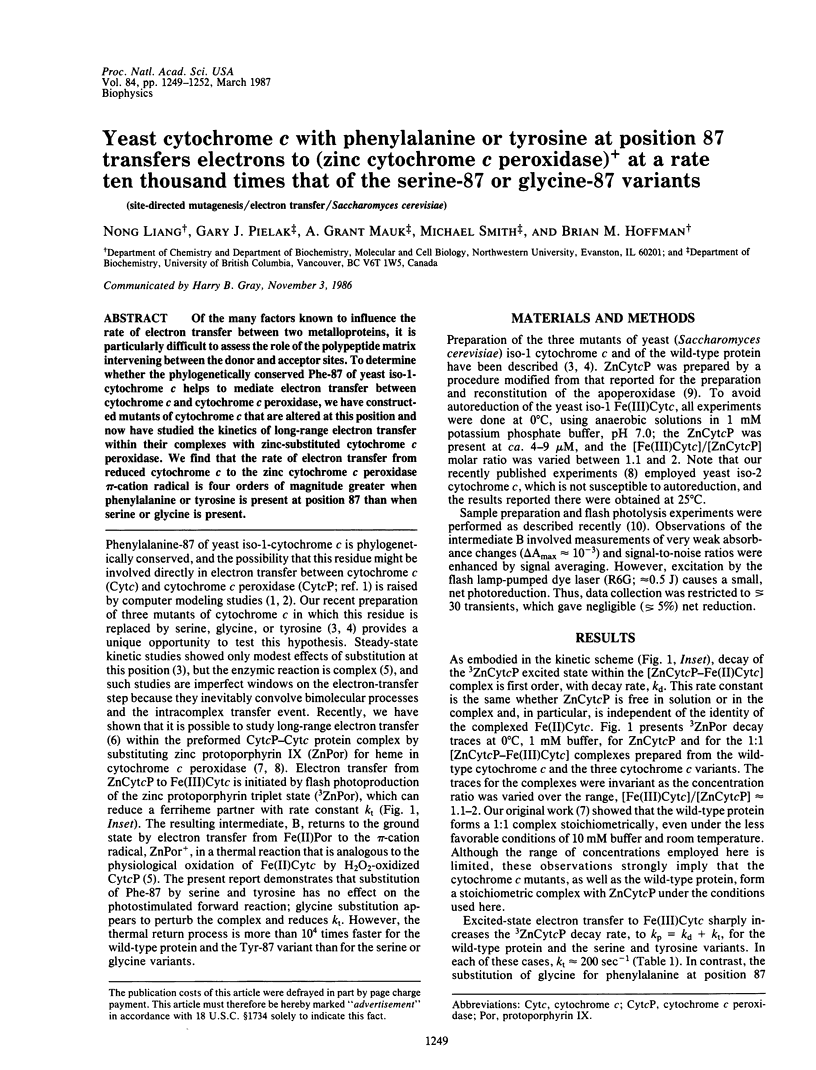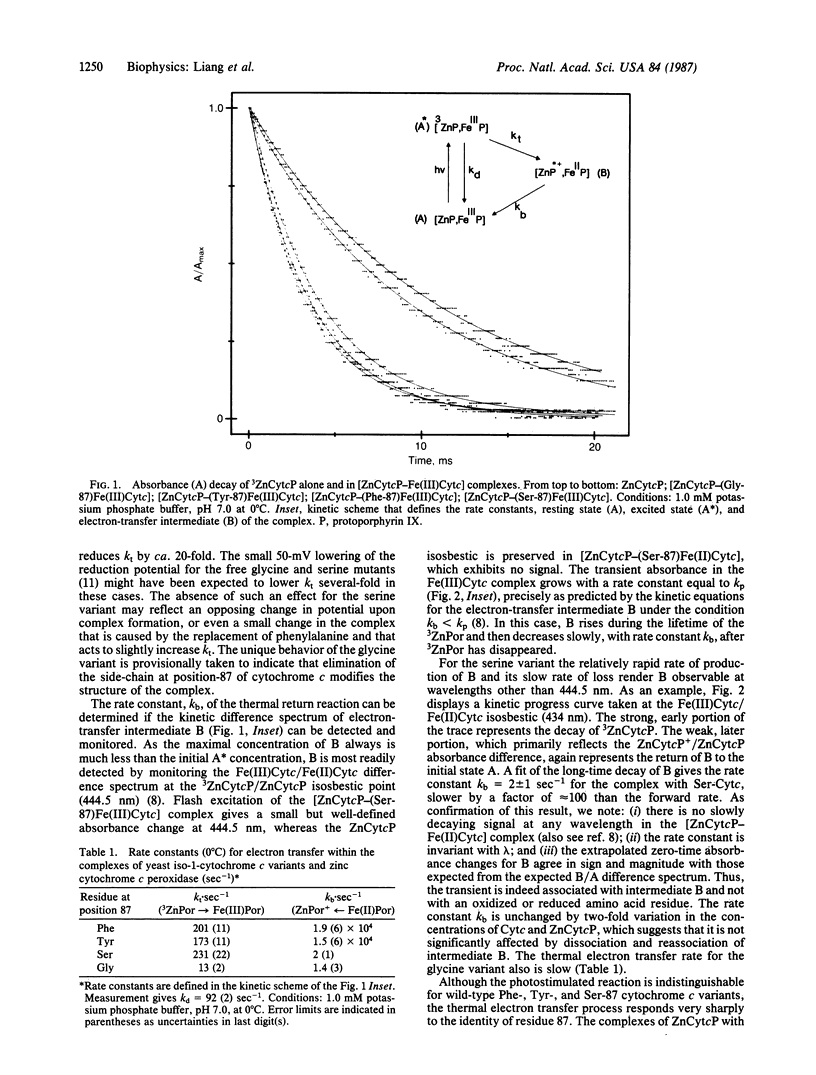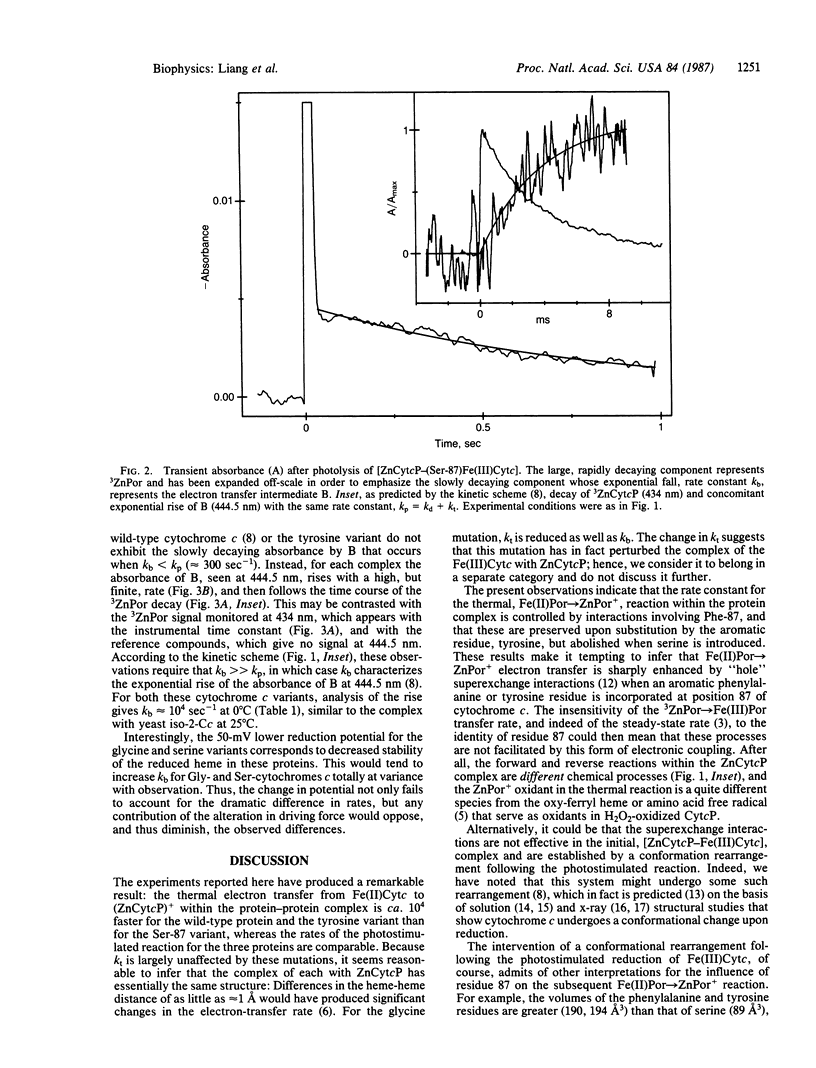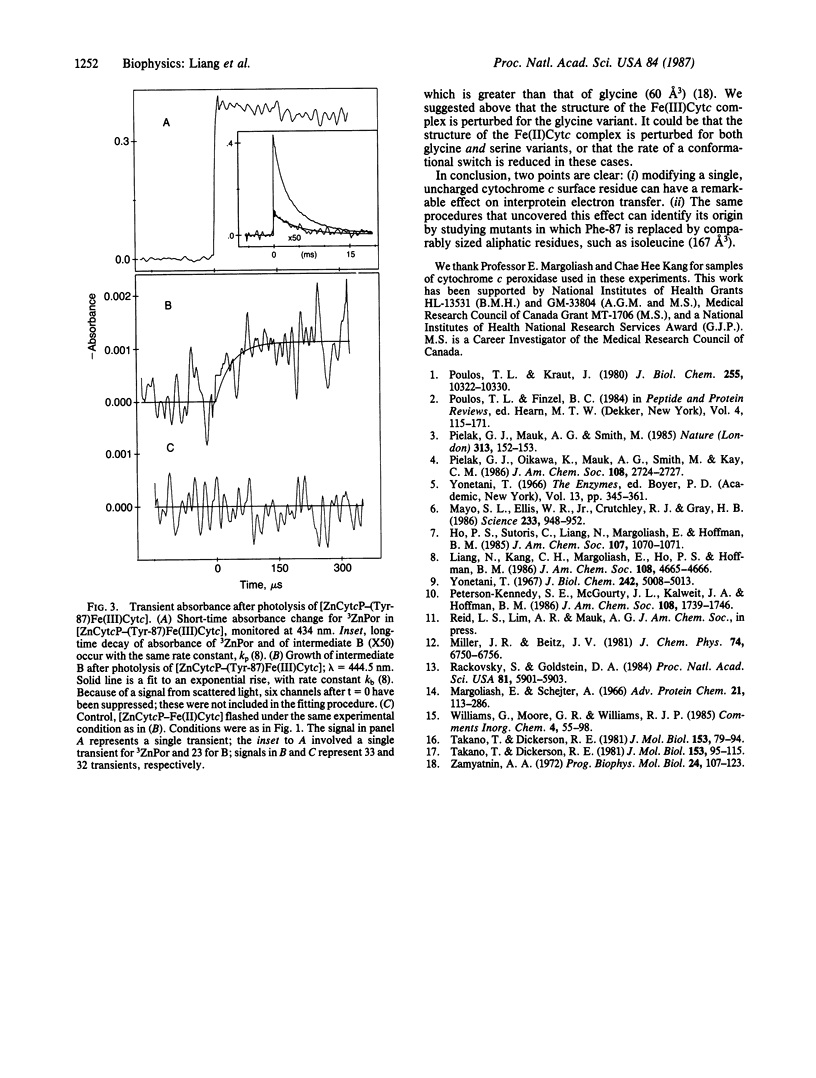Abstract
Of the many factors known to influence the rate of electron transfer between two metalloproteins, it is particularly difficult to assess the role of the polypeptide matrix intervening between the donor and acceptor sites. To determine whether the phylogenetically conserved Phe-87 of yeast iso-1-cytochrome c helps to mediate electron transfer between cytochrome c and cytochrome c peroxidase, we have constructed mutants of cytochrome c that are altered at this position and now have studied the kinetics of long-range electron transfer within their complexes with zinc-substituted cytochrome c peroxidase. We find that the rate of electron transfer from reduced cytochrome c to the zinc cytochrome c peroxidase pi-cation radical is four orders of magnitude greater when phenylalanine or tyrosine is present at position 87 than when serine or glycine is present.
Full text
PDF



Selected References
These references are in PubMed. This may not be the complete list of references from this article.
- Margoliash E., Schejter A. Cytochrome c. Adv Protein Chem. 1966;21:113–286. doi: 10.1016/s0065-3233(08)60128-x. [DOI] [PubMed] [Google Scholar]
- Mayo S. L., Ellis W. R., Jr, Crutchley R. J., Gray H. B. Long-range electron transfer in heme proteins. Science. 1986 Aug 29;233(4767):948–952. doi: 10.1126/science.3016897. [DOI] [PubMed] [Google Scholar]
- Pielak G. J., Mauk A. G., Smith M. Site-directed mutagenesis of cytochrome c shows that an invariant Phe is not essential for function. Nature. 1985 Jan 10;313(5998):152–154. doi: 10.1038/313152a0. [DOI] [PubMed] [Google Scholar]
- Poulos T. L., Kraut J. A hypothetical model of the cytochrome c peroxidase . cytochrome c electron transfer complex. J Biol Chem. 1980 Nov 10;255(21):10322–10330. [PubMed] [Google Scholar]
- Rackovsky S., Goldstein D. A. On the redox conformational change in cytochrome c. Proc Natl Acad Sci U S A. 1984 Sep;81(18):5901–5905. doi: 10.1073/pnas.81.18.5901. [DOI] [PMC free article] [PubMed] [Google Scholar]
- Takano T., Dickerson R. E. Conformation change of cytochrome c. I. Ferrocytochrome c structure refined at 1.5 A resolution. J Mol Biol. 1981 Nov 25;153(1):79–94. doi: 10.1016/0022-2836(81)90528-3. [DOI] [PubMed] [Google Scholar]
- Takano T., Dickerson R. E. Conformation change of cytochrome c. II. Ferricytochrome c refinement at 1.8 A and comparison with the ferrocytochrome structure. J Mol Biol. 1981 Nov 25;153(1):95–115. doi: 10.1016/0022-2836(81)90529-5. [DOI] [PubMed] [Google Scholar]
- Yonetani T. Studies on cytochrome c peroxidase. X. Crystalline apo-and reconstituted holoenzymes. J Biol Chem. 1967 Nov 10;242(21):5008–5013. [PubMed] [Google Scholar]
- Zamyatnin A. A. Protein volume in solution. Prog Biophys Mol Biol. 1972;24:107–123. doi: 10.1016/0079-6107(72)90005-3. [DOI] [PubMed] [Google Scholar]


